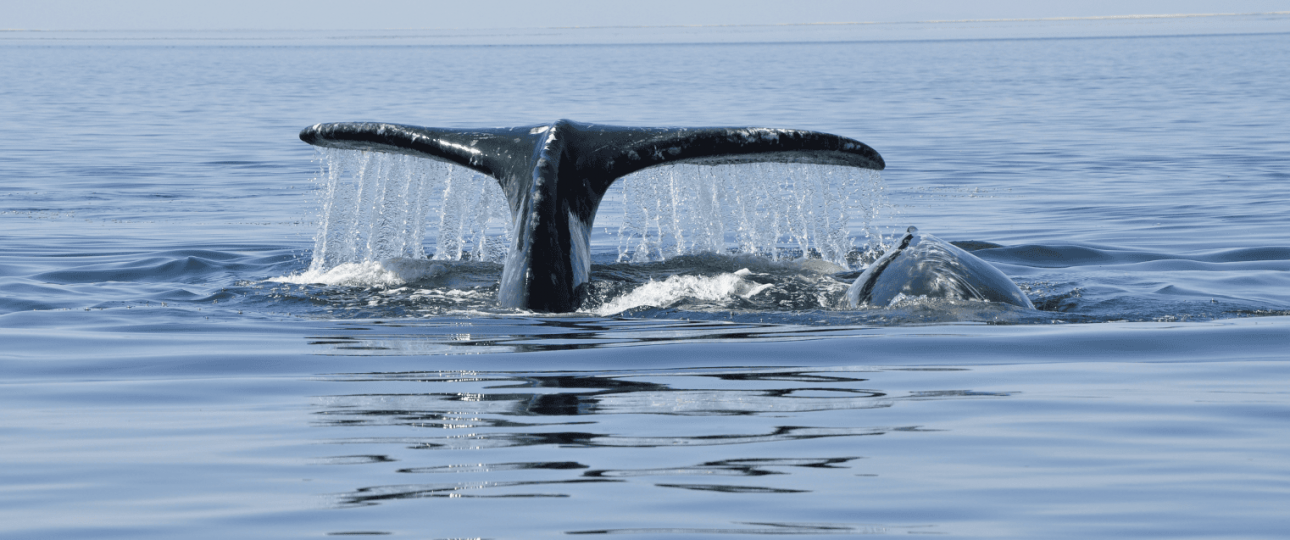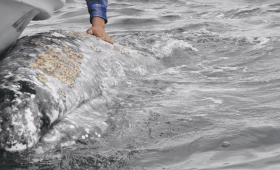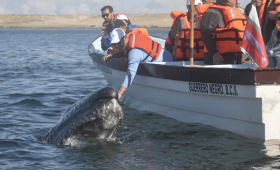Breaching—when a whale leaps dramatically from the water and crashes back with a thunderous splash—is one of the most captivating and iconic behaviors in the animal kingdom. Whale watchers around the globe often wait hours, even days, for that perfect moment when a massive gray whale bursts into the air. The sight of a 40-ton marine giant fully airborne, even for a brief second, is awe-inspiring and unforgettable. But what makes these majestic creatures engage in such a seemingly energy-draining act? The behavior, though extensively observed, is still not fully understood. However, based on years of observation and behavioral study, especially of the Eastern Pacific gray whales in Baja California’s lagoons, we can begin to unravel the mystery.
The Parasite Removal Theory: A Common but Weak Assumption
One of the earliest and most common theories about whale breaching has been that whales jump to dislodge skin parasites—barnacles and whale lice. Gray whales, in particular, are known to host an abundant population of both. These ectoparasites cling to the whales’ skin, often in dense colonies, particularly around the head, flukes, and pectoral fins. Given that gray whales carry more barnacles than any other whale species, it might seem logical to assume that they breach more frequently as a way to rid themselves of these hitchhikers.
However, this explanation doesn’t quite hold up under scrutiny. Breaching is an extremely high-energy maneuver. It requires massive physical effort, especially given the relatively shallow waters (20 to 40 feet) of the lagoons where many of these breaches occur. A whale can't dive deep for momentum and must instead accelerate horizontally before pulling upward with immense force. If the goal were truly to remove parasites, wouldn’t a less exhausting option—like rubbing against the sandy lagoon floor—be more efficient and far less costly in terms of energy?
Long-time observer and researcher Keith E. Jones argues precisely this point. His decades-long documentation of gray whale behavior, particularly between 2002 and 2006 at Laguna Ojo de Liebre, suggests that breaching is not primarily about parasite removal. Not only is there no consistent evidence that whales orient their parasite-covered patches to impact the water on landing, but whales tagged with tracking transmitters also don’t breach to remove the foreign objects. Instead, they dive and rub against the sea floor—further weakening the argument that breaching serves primarily as a way to dislodge skin irritants.
A Showcase of Youthful Exuberance
Observations from Jones’ fieldwork consistently show that breaching is most common among young, immature whales—those aged between one to four years. These juveniles return to the lagoons each year, but unlike adults, they are not actively participating in mating or nurturing calves. Instead, they appear full of energy and engage in what looks like play—repeated, exuberant leaps from the water, sometimes performing six or more breaches in quick succession.
This behavior can be interpreted as a display of youthful vigor, similar to the playful antics seen in young mammals on land, like dolphins leaping in synchronized arcs or lion cubs mock-fighting. These breaches don’t seem to serve an immediate survival function, but rather reflect a stage in whale development where physical capabilities are explored and strengthened—just as young humans learn to walk, run, or swim with gusto.
Instructional Breaching: A Mother’s Lesson
One of the most fascinating findings from Jones’ meticulous observations was the discovery of what he calls “breaching school”—a very short, annual period when mother gray whales themselves start breaching. This behavior, typically nonexistent throughout the birthing and early nurturing stages, suddenly appears for a brief 2- to 3-day window in mid-February.
What makes this period significant is that it aligns with the stage when baby whales, or calves, begin attempting their own jumps. These early attempts are clumsy, incomplete breaches—more like porpoising than the full body launch we see in older whales. During this short window, mothers perform repeated breaches, possibly as a visual and physical demonstration for their young. Once this instructional period ends, mothers cease jumping entirely, while the calves dramatically increase their own breaching attempts.
This behavior strongly suggests that breaching has a learned component. Just like orca mothers teach their young how to hunt or navigate icy waters, gray whale mothers may be teaching their calves an essential survival skill: how to breach.
Breaching as a Defensive and Offensive Tool
Breaching, it turns out, may serve more serious purposes than play and demonstration. It could be a vital behavior for both defense and offense. Marine biologists have long observed that animals, when cornered or pursued, often leap out of the water as a last-ditch effort to confuse or evade predators. For a gray whale calf being pursued by a pod of orcas, jumping out of the water might serve to break the predator’s line of sight or alter its trajectory, buying the calf precious seconds to escape.
Jones recounts an incident from the early 1980s in San Ignacio Lagoon, where a gray whale, possibly frustrated by an invasive research boat tailing it too closely, breached directly onto the boat. While no researchers were harmed, the message was unmistakable—breaching can be used as an aggressive response. A massive gray whale body crashing down on a fiberglass boat, or on an attacking orca, has the potential to inflict significant damage.
Even for calves weighing around 2,000 pounds, the momentum generated by breaching can be formidable. If a calf lands on an orca or disrupts its approach, the act could momentarily incapacitate the predator or at least disrupt its coordination. From a survival standpoint, that disruption could mean the difference between life and death.
Emotional Expression and Social Communication
Breaching may also serve as a form of emotional or social expression. Whales are highly intelligent, social animals. Their communication systems—both acoustic and behavioral—are intricate and multilayered. Breaching, with its visual and acoustic impact, could be a non-verbal cue to other whales. It might signify excitement, warn of danger, or establish dominance.
Mature male whales, especially during the breeding season, often breach with extraordinary force and frequency. These displays could be interpreted as demonstrations of strength and vitality—qualities crucial in natural selection. In this context, breaching serves as a form of courtship behavior, comparable to the strutting or displays seen in birds and other mammals.
The Twofold Purpose of Gray Whale Breaching
From Keith E. Jones’ years of detailed observation, a compelling two-part conclusion emerges:
- Breaching is an expression of emotion and energy. Young whales breach because it feels good. It’s exhilarating. It allows them to explore their physical limits, express themselves, and perhaps bond with others through shared behaviors.
- Breaching is a survival skill. Whether evading a predator or intimidating a pursuer, the ability to launch from the water can be life-saving. It is both a defensive mechanism and, at times, a powerful offensive weapon.
In addition to these, breaching likely plays a role in social signaling, physical development, and even in inter-species communication within the diverse marine environment.
To witness a gray whale breach is to witness an act that transcends simple explanation. It is part artistry, part athletics, and part instinct. While the scientific community continues to explore the deeper reasons behind this majestic behavior, field observations like those from Laguna Ojo de Liebre offer invaluable insights. Gray whales do not jump just to shake off a few parasites—they breach because they are strong, social, intelligent creatures that use every part of their bodies and minds to thrive in a challenging environment.
As our understanding grows, so too does our respect for these incredible animals. Whether leaping in joy, in instruction, or in defense, every gray whale breach is a testament to the complexity and wonder of life in the ocean.




